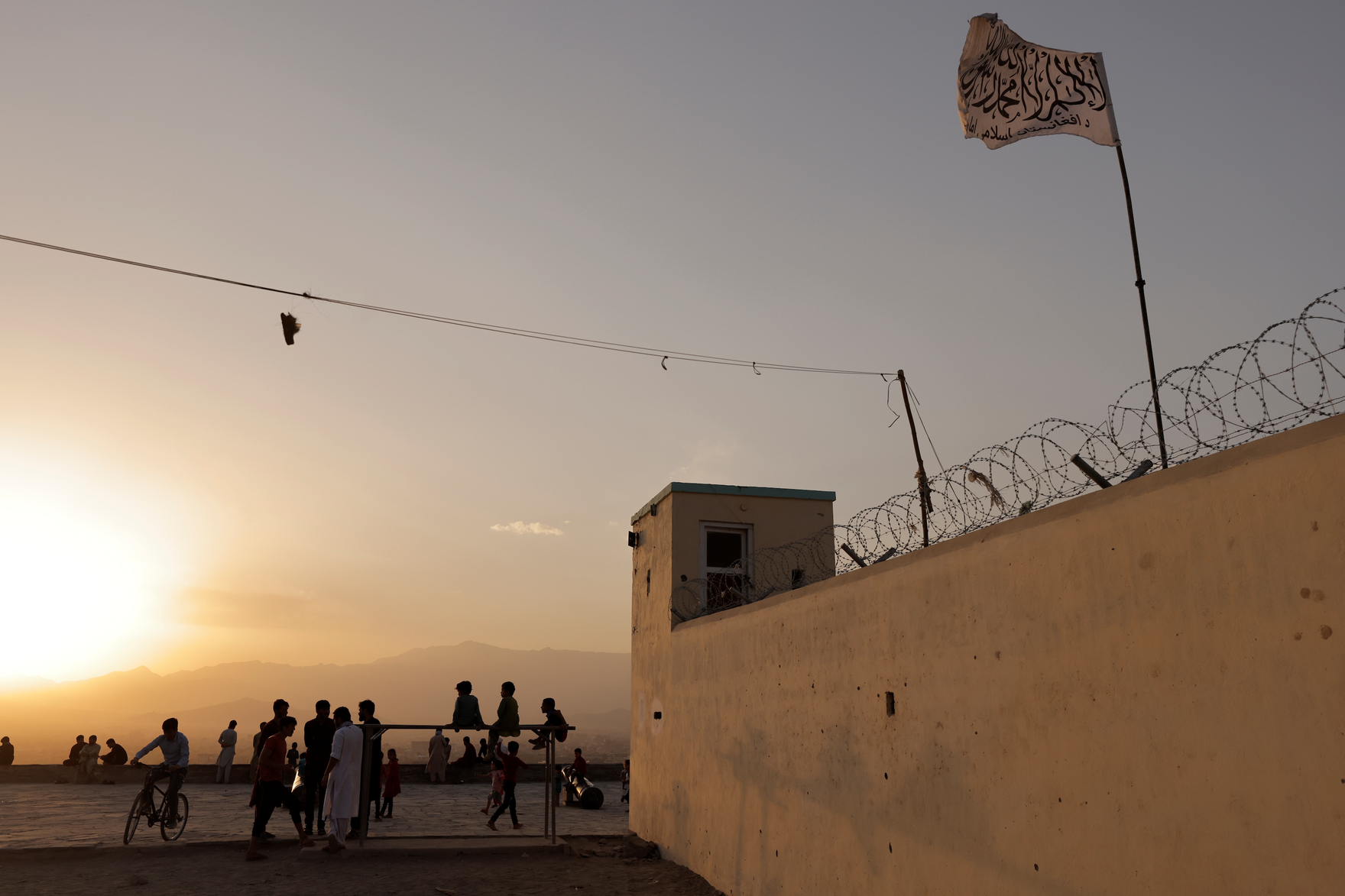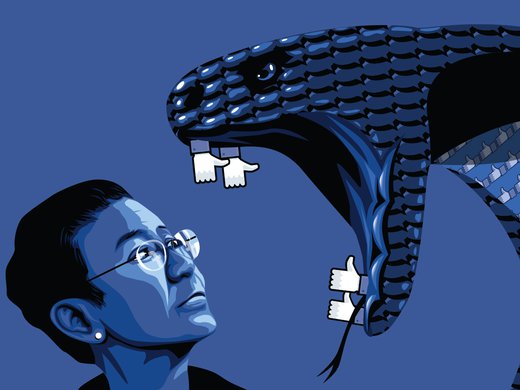The US government and the Taliban continue to grapple amid the repercussions of America’s exodus from Afghanistan at the end of August, with officials from both stateshaving met for two rounds of consultations in Doha since the Afghan Islamists took power in Kabul. It is clear, however, that the United States’ political decision was tied to broader geopolitical shifts within its new Indo-Pacific strategy. Western forces are opening up a more general concentration in Asia, hence the open strategy of withdrawal from previous theatres of involvement, including Afghanistan and Iraq. Research by Jessica Brandt, for instance, suggests that the power vacuum in these Middle Eastern countries is likely to be filled not by local forces but by external, often regional, powers.
One arena particularly affected by these grabs for control, and the associated media manipulation, is the online space. Computational propaganda continues to be prominent not only in the United States but also in other parts of the world, such as the Middle East and North Africa (MENA) region. The manipulation of public opinion that these campaigns trigger can be particularly potent in countries undergoing political transitions or repeated rounds of hostility after a revolution, such as Tunisia or Libya. At the same time, the on-the-ground meddling of international powers is palpable in Libya, with Russian mercenaries from the Wagner Group continuing to wreak havoc. Russia’s meddling online is at least as heavy, with Facebook pages such as “Libya Gadhafi” or “Libya forever” supporting Russian foreign policy goals by relentlessly pushing for narratives centred around, for instance, Saif al-Islam Gaddafi, the son of the deceased Muammar Gaddafi, as Libya’s saviour.
These developments should induce chills among Western policy makers concerned with our waning control, and Russia and China’s waxing power, in the region. If they don’t, another prospect should: the possibility that regional actors, such as the United Arab Emirates (UAE) and Iran, will capitalize on these expanded opportunities for shaping narratives to set headlines as democratic states disengage from countries like Libya or Afghanistan.
Control of Arabic Social Media
One of the defining characteristics of Arabic social media, and in particular, Twitter and Facebook, is that it is thoroughly co-opted by state forces. Yes, this space is targeted by external authoritarian powers such as Russia and China, but it is also heavily controlled by internal actors. In Iran, for instance, the Islamic Revolutionary Guard Corps targets domestic audiences across the country. Digital activists in Egypt, meanwhile, have been blunt with our Propaganda Research Lab team in outlining the degree to which Abdel Fattah al-Sisi’s various branches of government dominate social media by, as these activists describe it, “flooding everyone’s timeline with state-oriented traffic.” In order to maintain this intrusion, Sisi’s regime employs a stifling combination of large-scale surveillance operations and brutal crackdowns on opposition voices while dedicating significant resources to state propagandists aimed at maintaining, promoting or glossing over such activities. The Egyptian state’s digital cheerleaders are either directly employed at the Ministry of Defense or indirectly as state-mandated “influencers” who push state narratives via individual accounts. In the words of one of our interviewees, an Egyptian digital security consultant, “these [influencers] think that they are doing a service to the country…basically, a new form of military service.”
These simultaneous online-offline control efforts do not stop at the country’s borders. Egyptian sock puppet accounts are regularly involved in attempts to meddle in neighbouring Libya’s affairs. They have been particularly active in attempts to prop up Khalifa Haftar, Libya’s most infamous warlord and aspiring leader of the country. This inorganic, state-endorsed support of Haftar was directly at odds with the United Nations’ aims at the time, namely, the support of the warlord’s biggest rival, the Government of National Accord. Meanwhile, these “astroturf” groups, accounts used to imitate grassroots support and hence credibility, also work to promote other regional interests, driving digital confrontation with states such as Turkey and non-state actors such as the Muslim Brotherhood.
Digital propaganda campaigns in Saudi Arabia, a long-standing US ally and regional heavyweight, also continue to be destructive to democratic discourse and opposition. The fact that the country has an especially high digital penetration rate, paired with a large population and privileged access to resources, makes for more potent information manipulation efforts. Researcher Marc Owen Jones has shown how the Saudi government dominates Arabic Twitter by employing bot armies while concurrently relying on state messaging and broader social media manipulation campaigns from web-based news channels such as Saudi 24. In these cases, as in other computational propaganda campaigns across the MENA region, the government and its proxies massively amplify state-supporting narratives while working to delegitimize oppositional actors and their talking points. These latter efforts include direct attacks and defamation campaigns against local or international dissident voices.
The brief honeymoon phase that the MENA region experienced with social media in the course of the 2011 uprisings, which have entered popular memory as the “Arab Spring,” is long over. Both authoritarian leaders and malevolent non-state actors in the area have been quick to co-opt these digital platforms in their own efforts to exert power. Today, members of the research community must admit that they and other concerned parties were behind in their understanding of how quickly authoritarian actors in the region learned, adopted and utilized new media technology — including and beyond social media — for their own purposes of suppression and propaganda. Revelations such as the use of NSO Group’s Pegasus spyware by Dubai’s ruler to hack his ex-wife’s phone and her legal team while they were in London certainly underline the efficacy and precision with which such efforts are able to be executed.
Offline versus Online Capabilities and Impact
The focus of Western analysts and policy makers working to understand Middle Eastern-derived online influence operations, regardless of whether they target internal or external populations, has sometimes been misplaced, myopic or overblown. It is true that the perseverance of Bashar al-Assad in Syria, Hezbollah’s rise in Lebanon, and the power of the PMU (Popular Mobilization Units) in Iraq all show Iran to be an effective practitioner of proxy warfare. However, its online influence campaigns in the Arabic Twitterverse, often the cause of great concern to said Western analysts, seem relatively less potent. In short, research suggests that these efforts often don’t create much engagement. In other words, a savvy offline operator does not translate into a powerful online force, at least not automatically.
In order to curb the current toxicity and threats that many social media activists in the MENA region face, Western policy makers could work to link online pariah behaviour to offline political consequences. One way would be to tactically link policy areas and hold identified state actors that can be tied to specific efforts, for instance, ones encouraging online defamation campaigns against female journalists, accountable. In the wake of whistle-blower Frances Haugen’s revelations about Meta (formerly Facebook), policy makers would be well advised to stay vigilant with regard to new technological developments as they relate to authoritarian control efforts, both online and off. Clubhouse, for example, made a splash in 2020 and created a new avenue for Iranians at home and abroad to connect via more democratic communication. However, users of the relatively new app have witnessed eerily familiar intimidating state behaviour, including efforts to place conversations intended for private Clubhouse rooms on Twitter and hence to expose participants.
Moreover, as computational propaganda advances in the MENA region, Western policy makers must not only passively monitor it but also develop resilience mechanisms to shield democracies and democratic activists from future manipulation attempts. For instance, we should be beyond a time when Iranian hackers could pose as members of the Proud Boys in emailed efforts to threaten US citizens to vote for Trump.
At the same time, unabated securitization of social media in the Middle East risks potentially disregarding the creative ways in which parts of the local populations are using social media for local engagement that Western policy makers could capitalize on. Ongoing research on communication for resilience based at SOAS University of London, for instance, explores the role of media capacity initiatives as a tool for communicative resilience in Tunisia and Lebanon. Preliminary results indicate that communities who tend to be stigmatized as vulnerable or powerless in the prevailing media discourse gain agency by consolidating alternative communication networks by relying on community-owned media and messaging apps — with these being able to focus on self-narration.
The United States, along with many of its allies, might be disengaging from the Middle East, but its democratic values and respect for human rights, including freedom of expression, are still crucial for its identity and hence also its foreign policy — let’s not forget the online space in this regard.



